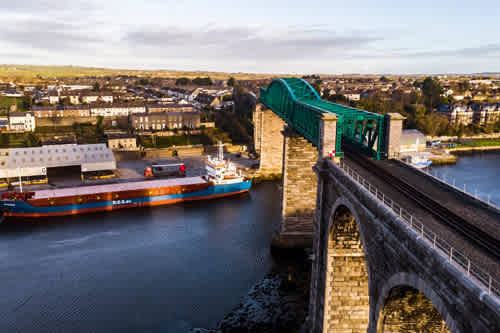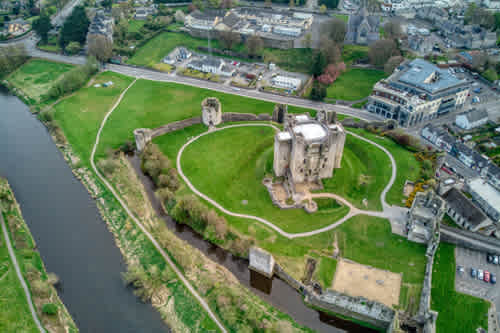About Meath
County Meath's strategic central location made it popular throughout the eras and as a result there is an abundance of historic sites and remains from every period.
Just north of Dublin in East Ireland, lies the County Meath. From the Iron Age (600 BC to 400 AD) the historic County of Meath was the seat of the High King of Ireland which is how this county got its moniker "The Royal County”.
Near the village of Skryne is the Hill of Tara that is not only a ceremonial and burial site but according to tradition it is also the place where the coronation of the High King took place, making it this site with tombs and standing stones popular with tourists.
The five-thousand- year-old Newgrange is situated in the Boyne Valley, north of Dublin, on the bank of the river Boyne. It is even older than Stonehenge in the UK and the pyramids in Egypt. Built during the Neolithic Period, it is a round passage-tomb burial site. The opening on the top of the passage, referred to as a roof-box (perhaps similar to a sun-roof in modern architecture) is such that on December 21st, the shortest day of the year, the sun will cast its rays through the “roof-box” and illuminate the inner chamber just as darkness falls.
Note: The term roof-box refers to an opening above the doorway which allows the sun’s light to shine through and run the whole gamut of the tomb. It was coined by the archeologist who led the exaction of Newgrange, Michael O’Kelly (1915-1982).
Newgrange and two other prehistoric sites, Knowth and Dowth, are part of Brú na Bóinne and are on the list of the UNESCO World Heritage Site. The trio is acknowledged as the most significant group of megalithic art in Europe.
Another important historic site is the Battle of the Boyne Visitor Center, located on the river Boyne where in 1690 the battle transpired. The encounter was between the forces of the deposed King James II of the Catholic Stewart Dynasty and those of King William III who, with his wife Queen Mary II, had acceded to the Crown of England and Scotland in 1689, with King William being the victor.
The area around the river Boyne is more than a historical site, it is also a wonderful place for hiking and a “water playground” for those who love water activities including kayaking and whitewater rafting.
There are castles and mansions throughout the county and be sure not to miss the Heritage Town – Kells (once a walled city – and unfortunately only a small portion exists) and the Kells Abbey where the Book of Kells (the four Gospels, in Latin) was found and is Ireland's oldest treasure. The book itself is exhibited in Trinity College Dublin. A visit to one of Ireland’s best medieval heritage towns is Trim and the Trim Castle is the most important building there. As well take a quick tour around the county town Navan which is also the largest town in Meath County, about 50km from Dublin where the Boyne and Blackwater Rivers meet.





